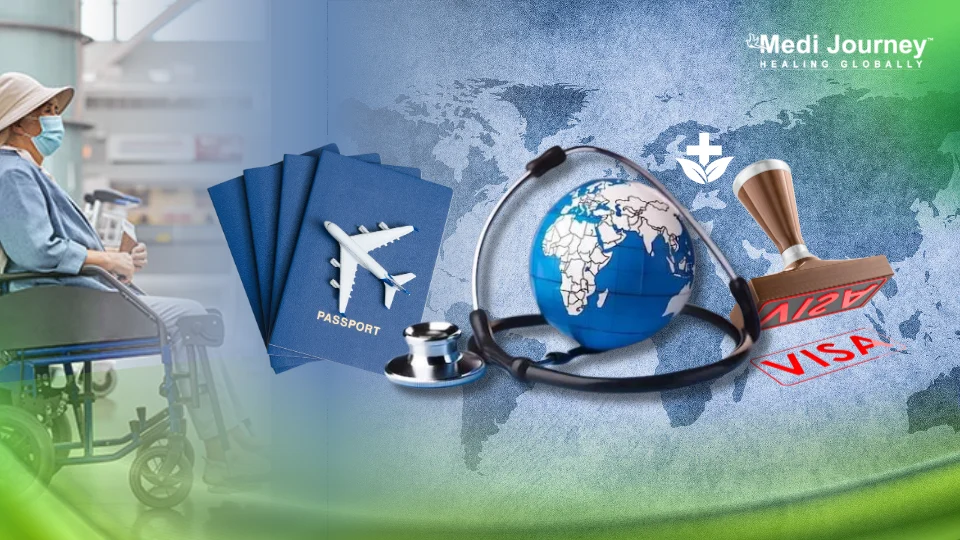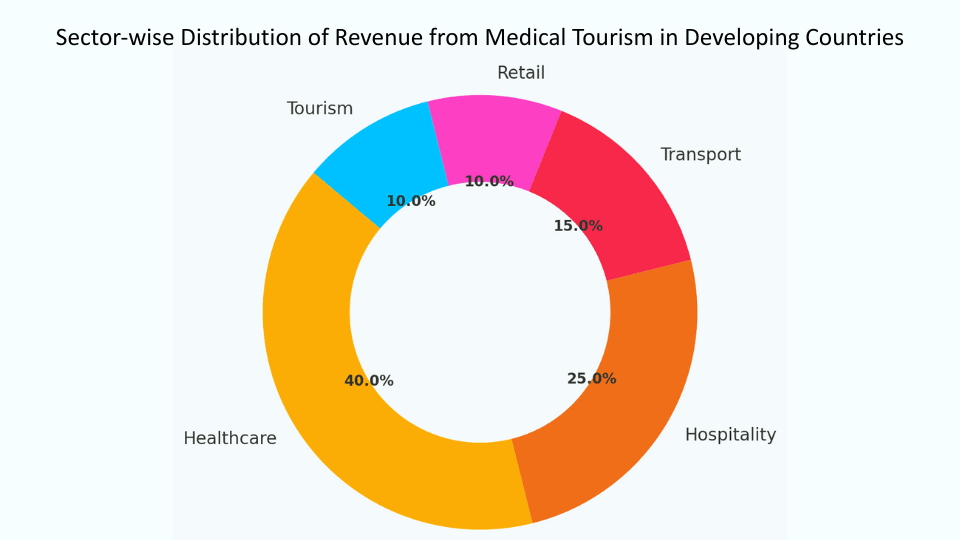Best Cardiologists in Artemis Hospital Gurgaon
 10 December,2025
Read More
10 December,2025
Read More
Enquire now in case of any assistance needed
 24 May,2025
24 May,2025

The practice of traveling to foreign countries for medical care, known as medical tourism, has experienced significant growth in the past two decades. Nations such as India, Thailand, Turkey, and Malaysia have emerged as favored locations, providing high-quality medical services at affordable costs. This movement is often driven by the promise of world-class treatment at significantly lower costs, shorter waiting times, or access to specialized procedures unavailable in their home countries. What began as a niche market has blossomed into a multi-billion-dollar industry, with projections indicating it could surpass USD 650 billion by 2035.
Although this industry generates economic advantages, it also presents important considerations regarding its long-term viability, particularly concerning its environmental footprint and consequences for local populations.
This blog provides insights into the environmental and social dimensions of medical tourism, highlighting challenges and exploring pathways toward a more sustainable future.
Fill up the form and get assured assitance within 24 hrs!
Air travel is a significant contributor to greenhouse gas emissions. For instance, a round-trip flight from New York to Bangkok emits approximately 3.8 metric tons of CO2 per passenger. As medical tourism grows, the cumulative environmental impact of increased air travel becomes a pressing concern.
Hospitals catering to international patients often consume substantial resources. Energy-intensive equipment, extensive water usage, and the need for constant climate control contribute to a sizable environmental footprint. For example, a single MRI scan can consume as much electricity as an average household does in a day.
Medical procedures generate significant waste, including hazardous materials. In regions lacking robust waste management systems, this can lead to environmental pollution. Implementing effective waste segregation, recycling programs, and safe disposal methods is crucial to mitigate these risks.
The influx of medical tourists can strain local healthcare systems. In Hainan, China, the rapid growth of medical tourism has led to concerns about escalating healthcare costs for residents and the diversion of medical professionals to private sectors catering to tourists, potentially degrading public healthcare quality.
While medical tourism can boost local economies, the benefits are not always evenly distributed. Studies in Malaysia have shown that while there is economic growth, concerns persist regarding reduced healthcare access for locals and the commercialization of healthcare services.
In the Caribbean, the development of medical tourism raises questions about environmental health equity. The growth of this sector can impact social and physical environments, resources, and waste management infrastructure, potentially harming local populations and ecosystems. The following table summarizes environmental impacts:
|
Impact Category |
Description |
Relevant Statistics/Facts |
|
Carbon Emissions |
From international patient travel and associated tourism activities. |
Tourism accounts for 8-9% of global GHG emissions; aviation is ~50% of tourism emissions. |
|
Resource Consumption |
High demand for water and energy in medical facilities. |
Hospitals use 7% of total commercial water in the US; 10.6% of Brazil's annual energy. |
|
Waste Generation |
Increased volume of hazardous and non-hazardous medical waste. |
15% of healthcare waste is hazardous; tourists generate nearly double the waste per capita. |
Therefore, medical tourism presents both opportunities and challenges for host countries. While it can drive economic growth, create jobs, and enhance healthcare infrastructure, it also poses risks to the equitable distribution of healthcare services.
Medical tourism has emerged as a significant contributor to the economies of many countries, particularly in developing nations. This growth not only boosts foreign exchange earnings but also stimulates various sectors such as healthcare, hospitality, transportation, and retail. The influx of international patients leads to increased demand for medical services, resulting in job creation for healthcare professionals, administrative staff, and support services.
The following chart illustrates the distribution of revenue generated from medical tourism across key sectors in developing countries: healthcare, hospitality, transport, retail, and tourism.

This sector-wise breakdown highlights how medical tourism fuels economic growth by stimulating multiple industries beyond just healthcare.
Turkey has made progress in incorporating environmental sustainability into its healthcare system. Hospitals are adopting advanced waste management techniques, renewable energy sources, and energy-efficient systems. These initiatives lessen the impact on the environment and draw eco-aware medical tourists.
Some hospitals in India have adopted sustainable practices. A top hospital in Mumbai has reduced energy use by 30% by installing solar panels, implementing extensive waste segregation and recycling programs, and designing infrastructure with energy-efficient materials.
On Sumba Island, Indonesia, the Nihiwatu resort has gone beyond traditional hospitality by establishing the Sumba Foundation. The Sumba Foundation’s impact has grown: clean water access has reached 25,000+ people, and 250+ water stations have been built. It’s now known as NIHI Sumba.
Healthcare facilities can reduce their environmental footprint by adopting green building standards. This includes using sustainable materials, optimizing natural lighting, and installing energy-efficient systems.
Medical tourists can contribute to sustainability by choosing eco-friendly accommodations, minimizing single-use plastics, and opting for sustainable transportation options.
Involving local communities in the development of medical tourism ensures that the benefits are shared. This includes creating job opportunities, investing in local infrastructure, and ensuring that healthcare remains accessible to residents.
Governments play a crucial role in regulating medical tourism to ensure sustainability. This includes setting environmental standards for healthcare facilities, monitoring the impact on local communities, and promoting equitable access to healthcare services.
The following table summarizes key strategies for fostering sustainable medical tourism:
|
Category |
Specific Strategies |
|
Governance & Regulation |
Implement policy reforms, streamline visas, and offer incentives. Promote and mandate international accreditation (JCI, GHA). Develop and enforce ethical guidelines and ensure full disclosure of risks/benefits. |
|
Green Healthcare Practices |
Adopt renewable energy, waste reduction, and green building designs (LEED). Implement robust waste management (segregation, recycling, pyrolysis). Encourage carbon offset programs, green travel certifications, and telemedicine. |
|
Community-Centric Development |
Implement cross-subsidization schemes to support public healthcare. Improve public sector working conditions and salaries to mitigate brain drain. Ensure equitable benefit distribution, support local businesses, promote cultural preservation, and involve communities in planning. |
|
Innovation & Collaboration |
Leverage telemedicine and AI for enhanced patient access and reduced environmental impact. Develop "green wellness" and "longevity retreat" models. Foster partnerships with international organizations (UN Tourism, MTA, UNEP) for global standards and shared responsibility. |
Medical tourism offers significant economic opportunities but also poses challenges to environmental sustainability and social equity. By adopting green practices, engaging local communities, and implementing effective policies, stakeholders can ensure that medical tourism develops in a way that benefits both international patients and local populations.
Sustainable medical tourism is not just about reducing environmental impact; it's about creating a healthcare ecosystem that is equitable, responsible, and resilient for the future.
At MediJourney, we’re committed to guiding patients around the world toward safe, affordable, and high-quality medical tourism. We understand how overwhelming it can be to navigate treatment options in another country, which is why we handle every detail—from selecting the right doctors and hospitals to organizing medical visas, appointments, and post-treatment care. Our team works closely with accredited hospitals to ensure transparency, comfort, and ethical practices throughout the patient’s journey. At every step, we’re here to support, inform, and empower individuals in making confident healthcare decisions.
We also believe in sustainable environmental practices and making green practices more relevant in medical tourism. Contact us today to learn more.
Fill up the form and get assured assitance within 24 hrs!
B.Sc in Media Science, NSHM Knowledge Campus, Kolkata, 2019-2022
Suryani Dutta is a passionate content writer with a background in media studies, equipping her with a deep understanding of storytelling, audience engagement, and digital trends.
Chairman
Cardiac Electrophysiologist, Interventional Cardiologist
Dr. T.S. Kler, a Padma Bhushan awardee and the Chairman of Fortis Heart & Vascular Institute, transformed the field of electrophysiology in India through over 35,000 angioplasties and innovative device implants. After earning the MRCP (UK) in 1989, he launched India's first electrophysiology lab at Escorts Heart Institute in 1993, where he conducted the country's first ICD implant in 1995 and the first CRT-D implant in 2000. His introduction of HIS bundle pacing in 2015 resulted in a 30% improvement in cardiac synchronization outcomes. He is one of the leading doctors in Gurgaon, India, and he is currently focused on integrating AI-driven models for arrhythmia prediction, analyzing over 10,000 ECGs with a machine learning algorithm....
Senior Consultant
Medical Oncologist
Nanavati Super Specialty Hospital, Mumbai
WhatsApp UsSenior Director
Gynecologist and Obstetrician, IVF Specialist
Max Super Speciality Hospital, Shalimar Bagh, New Delhi
WhatsApp UsSenior Director
Gynecologist and Obstetrician, IVF Specialist
Max Smart Super Speciality Hospital, Saket, New Delhi
WhatsApp UsSenior Director
Gynecologist and Obstetrician
Max Smart Super Speciality Hospital, Saket, New Delhi
WhatsApp UsSenior Director
Gynecologist and Obstetrician
Max Smart Super Speciality Hospital, Saket, New Delhi
WhatsApp UsSenior Director
Gynecologist and Obstetrician
Max Smart Super Speciality Hospital, Saket, New Delhi
WhatsApp UsThe Art of Effective Communication
 10 December,2025
Read More
10 December,2025
Read More
 09 December,2025
Read More
09 December,2025
Read More
 05 December,2025
Read More
05 December,2025
Read More
 04 December,2025
Read More
04 December,2025
Read More
 27 November,2025
Read More
27 November,2025
Read More
Trusted by Patients
"I am Asim from Bangladesh and was looking for treatment in India for neuro. I visited many websites to get the complete information regarding the treatment but I was not satisfied as I was getting confused. In the meanwhile, one of my friends suggested I seek help from Medi Journey as he experienced his medical journey very smoothly and was satisfied with it. They have filtered the top 10 doctors as per experience, the success rate of surgery & profile, so it helps us to choose the best treatment in India. "
"For my knee surgery, Medi Journey guided me to BLK Hospital where I received exceptional care. The team's support and the expertise at BLK Hospital exceeded my expectations. Thank you Medi Journey for making my medical journey stress-free. "
"I came from Iraq for my granddaughter's eye surgery in India facilitated by Medi Journey, due to critical cases they advised us to get a second opinion from the different hospitals before going to surgery. Finally, we went to Fortis Escort Hospital, which helped us to get more confidence for diagnosis. Fortis Escort Hospital has the best eye surgeon team with the latest instruments. Thanks to all team members for providing a high-quality treatment in India at an affordable cost. "
"I came for my hair transplant in India, before coming I was so confused about choosing the best clinic and surgeon for me. But thanks to God one of my friends had a hair transplant in India through Medi Journey. He recommended me to go with them. I am completely happy with my experience with them. They were always very fast in their responses to me. the success rate of my hair transplant surgery is 100%."
"Artemis Hospital, suggested by Medi Journey, turned out to be a great choice for my treatment. The personalized assistance and medical care were exceptional. I'm grateful to Medi Journey for guiding me to a hospital that perfectly matched my needs. Highly recommended! "
"I came from Afghanistan for my treatment in India at Jaypee Hospital, Noida. I had a fantastic experience with Medi Journey. Kudos to them for their incredible support during my medical journey. They not only took care of all the logistics but also connected me with a fantastic healthcare team. Efficient, caring, and highly recommended for a hassle-free medical tourism experience."
"I am Adam from Kano, Nigeria, one of my friends from Nigeria was facilitated by Medi Journey, and he recommended us to go with them. I sent my all reports to them and within 48 hours they reverted with 4 options from different hospitals. They helped me to get a Visa letter from the hospital, arrange pick-up from the airport, and book a hotel for me. Their team is very honest and throughout our stay in India they are with us they are caring for us like his family members. BLK Hospital is the best hospital in India with a top surgical oncologist surgeon team, a very advanced OT, and a Radiotherapy department. I wish more success to Medi Journey. "
"Great experience at the Max Hospital for my spine surgery and was successfully done. I thank my neurosurgeon and his entire team. I recommended all of my country's people to Medi Journey for treatment in India, they choose the best hospital, the best doctors, and the best cost for patients."
"I came to India from Dhaka, Bangladesh for my father-in-law's cardiac surgery at Fortis Hospital. I was confused about choosing the best surgeon for him before coming, but their team helped me to choose the best hospital and best cardiac surgeon in India with very good cost and 100% success rate of surgery. I am very happy with the services, really they make my journey so comfortable that make me feel at home. Thanks again and I like people to choose "Medi Journey" as your travel guide. "
"I am Mohammad from Bangladesh came to India for my general health checkup. Medi Journey offers me the complete package including Pick-up from the airport, hotel services, and 24-hour assistance. They guide you to choose the best hospital in India, the best cost of treatment with top-most doctors and give you complete information about hotel booking, and pick-up from the airport before coming to India They have the best team to help. Always choose Medi Journey for your treatment in India."





